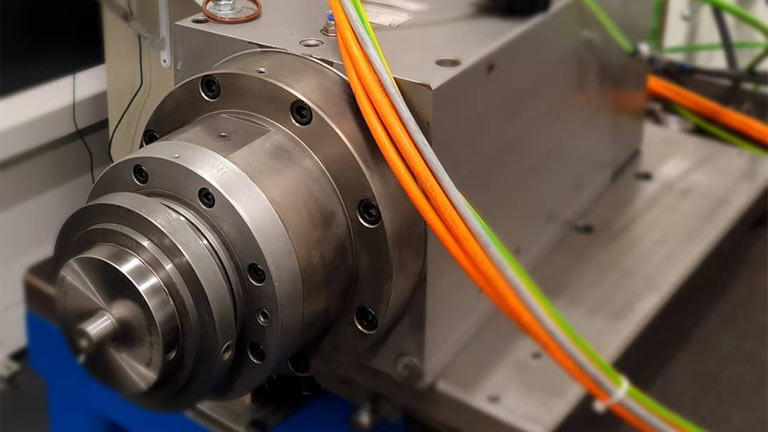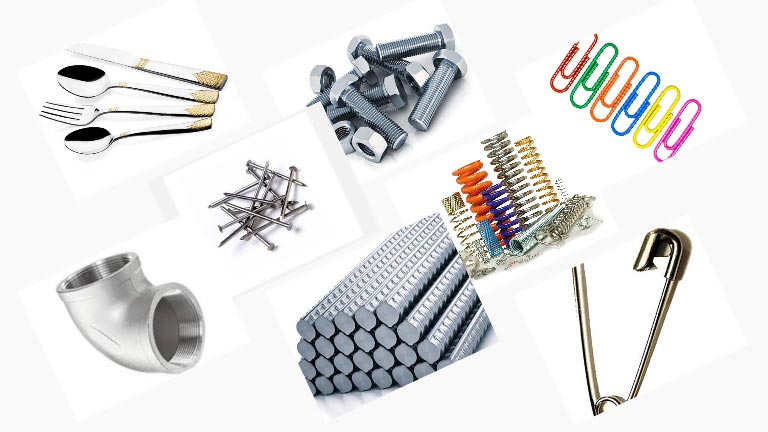
Many industries rely on high-speed machining (HSM) to manufacture precision parts and components that make their products safe, consistent, and reliable. Such industries include automotive, defense, medical equipment, oil and gas, and heavy equipment manufacturing, to name a handful. Chief among those industries, one whose reliance on precision components can’t be emphasized enough, is aerospace manufacturing.
For industries like aerospace manufacturing to consistently produce precise, efficient, and reliable parts and components, it needs to employ equipment like CNC machines that use high-speed spindles. Why? Because high-speed spindles produce components that meet all the demands of aerospace manufacturing with exceptional quality and accuracy while minimizing production time and rework.
Admittedly, that’s a big, bold statement. So, let’s take a closer look at the six major benefits of using high-speed spindles in aerospace manufacturing.
1. Precision and Accuracy
The first benefit we’ll cover is also probably the most important. In aerospace manufacturing, precision and accuracy are paramount. This isn’t just because the parts and components must be reliable for operations to remain successful; they also must be safe. That means there isn’t any wiggle room for parts and components that don’t meet the specifications for tolerance and quality.
High-speed spindles can achieve this precision and accuracy through:
- CNC Machine Programming
- Dynamic Balancing
- High-Speed Alignment
- Automatic Tool Changing Capability
High-speed precision spindles produce exceptional products that meet the performance and safety demands critical to aerospace operations. Without them, these demands would rarely be met.
2. Faster Production Turnaround
Using high-speed precision spindles means a part will be produced faster while meeting exceptional quality and accuracy. It also means many parts will be produced with the same quality and accuracy in less time. High demand will be met by manufacturing equipment operating at high speeds and producing greater output. Assuming the equipment is well maintained, the final products will be delivered at the required tolerances while reducing production times.
This increase in productivity will ensure deadlines are met or exceeded while also increasing efficiency on the production line. In addition, this will significantly help in manufacturing new parts and components and restocking repair/replacement parts, especially for high-demand or critical items in short supply.
3. Faster Material Removal Rate
Using high-speed spindles also provides a faster material removal rate (MRR). In short, the MRR is the amount of material removed from the manufactured item per unit of time. Increasing the MRR doesn’t mean running the spindle as fast as possible. Instead, the MRR must be as fast and efficient as possible in removing the material without sacrificing quality and causing rework. High-speed spindles are consistently able to remove material at a faster rate and in a more efficient manner.
A faster MRR is often required when working with aluminum or alloys for turbine components, which are both necessary in aerospace manufacturing. A faster MRR ensures high productivity while improving surface finishes in less time. Surface finishes are critical to meeting performance specifications for aerospace components.
4. Adaptable to Changing Needs
Like other industries, the aerospace industry constantly seeks ways to improve its products by employing new technology, improving efficiency, and meeting new standards that help protect the environment and increase safety. Many of these improvements necessitate changes in the material used to make the parts and components the industry needs. Often, the material used in parts and components changes due to a change in design, such as making equipment lighter.
High-speed precision spindles are highly adaptable to changing production environments. They can be used with materials such as advanced composites and superalloys. This adaptability also helps manufacturers adjust or scale up their operations to meet new demands in an ever-changing market.
5. Improved Equipment Longevity
High-speed spindles are designed to operate in high-demand, high-output environments. In other words, they’re designed to work hard. In addition, they’re also designed in a way to support maximum efficiency that minimizes unnecessary wear and tear for tools and components. This ensures that the final manufactured products remain precise and accurate while prolonging tool life and equipment longevity.
Design aspects that contribute to longevity include:
- Incorporating and maintaining precise equipment alignments
- Maintaining low spindle vibration levels
- Incorporating reliable bearing lubrication and cooling systems
That all being said, a spindle’s design and proper operation aren’t the only factors contributing to improved equipment longevity. Predictive and preventive maintenance also play critical roles in maintaining production output, delivering precise quality parts, and minimizing downtime and repair expenses. The good thing about high-speed spindles is that such maintenance is usually easy and straightforward. In addition, monitoring instruments for high-speed spindles allow operators to identify potential issues before they become a reality.
Great design, proper operation, and utilizing predictive and preventive maintenance prolong spindle tool longevity. Taken together, you’ll deliver high-quality aerospace components consistently.
6. Energy Efficient
Speaking of reducing expenses and increasing production efficiency, high-speed spindles are also designed to be energy efficient in regards to their power demand versus work output. Motor design and power transmission advancements have ensured that spindles can operate at high speeds while optimizing energy use. This efficient mode of operation reduces cost and improves the short- and long-term manufacturing process, all without sacrificing product quality.
In Conclusion
The benefits of high-speed precision spindles in aerospace manufacturing outnumber the ones covered in this brief article. The key takeaway is that high-speed spindles can produce the precise, accurate, and quality components demanded by the aerospace industry on a consistent, efficient, and productive basis. Their adaptability to new technology and changes in design allows them to keep manufacturers competitive and at the forefront of producing safe, reliable, and scalable product lines.




